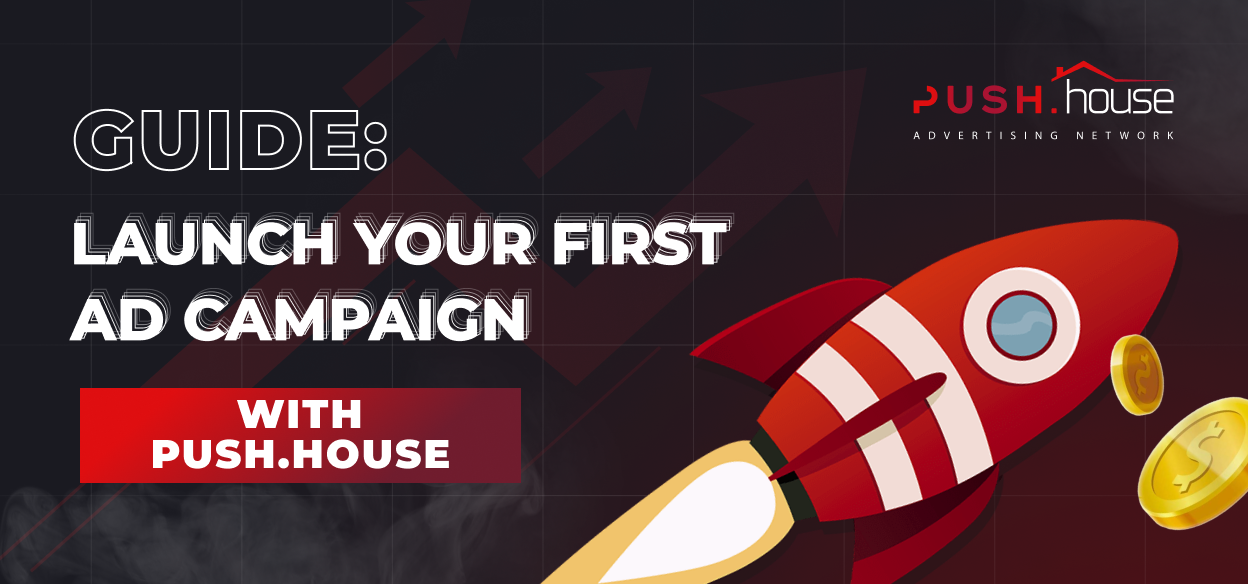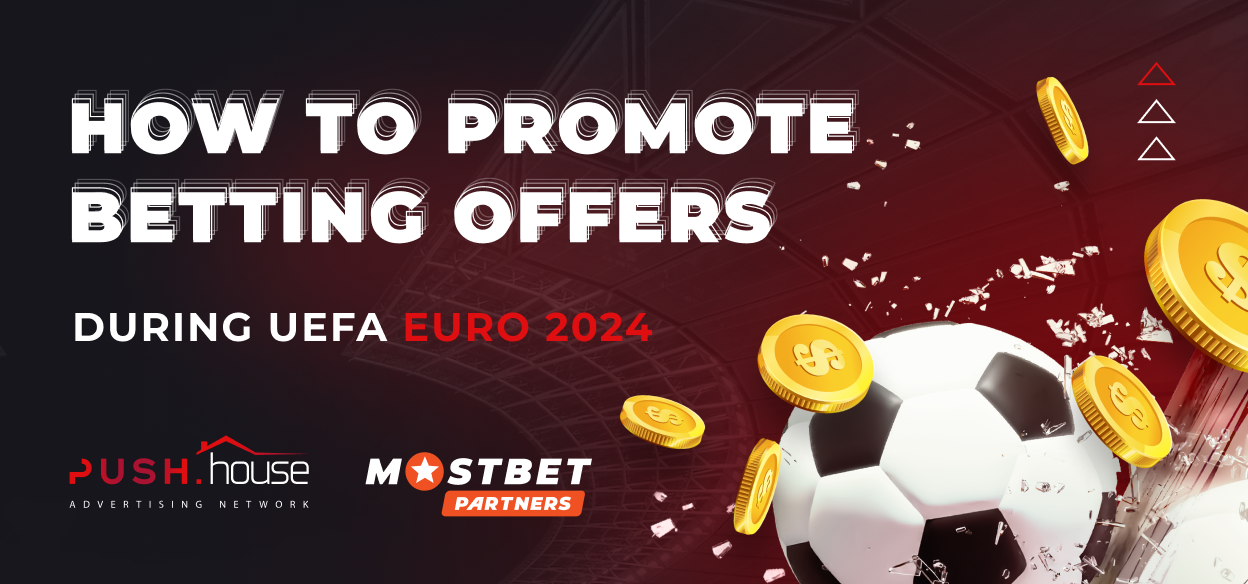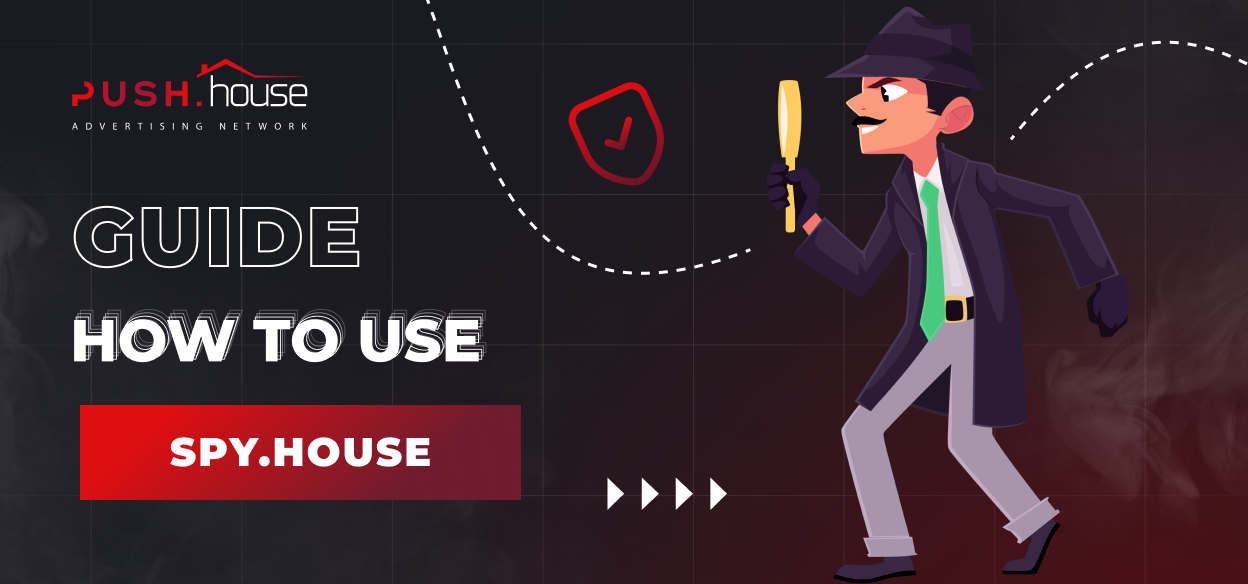
Push Notifications: What Are They and How Do They Work
Hello! It’s Push.House here.
We all use mobile phones and PCs. Regularly, notifications pop up on our device screens, informing us about changes in app functionality or the release of a new system update. These types of messages are called push notifications. They instantly grab our attention and appear in the most noticeable parts of the screen. The functionality and potential of push notifications have been successfully utilized in internet marketing and media buying for a long time, enabling advertisers to effectively promote offers from top verticals.
In this article, we’ll dive into what push notifications are, how they can be used to attract targeted traffic to offer pages, and which verticals benefit the most from this advertising format.
What Are Push Notifications As An Ad Format
Push notifications are small pop-up advertising messages that appear on a user’s screen.
The format of advertising push notifications itself is indistinguishable from standard browser and app notifications. Each of us regularly receives such notifications from programs and services on our mobile devices. The technology of push notifications actually originated from applications. Back in 2009, Apple was the first company to use push notifications to inform smartphone owners about new updates. Gradually, push notifications established themselves as the primary means of communication with users. While visiting various websites, users often encounter the option to ‘Subscribe’. Agreeing to this subscription allows users to receive advertising notifications even when they are not actively using the website they subscribed to. It is this feature that makes push notifications one of the most effective advertising formats in 2023.
Types of Push Notifications
Since the time when push notifications were used to inform users about app-related changes, the format has remained mostly unchanged. Push notification ads consist of several text blocks and images and look like this:


- 1 — Badge: A small icon displayed in the upper left corner of the advertising creative. A well-chosen badge can impact CTR and make the advertising campaign more effective by visually demonstrating the benefit the user can gain from clicking on the ad. For example, receiving a monetary benefit.
- 2 — Title: Displayed in bold font and can include up to 30 characters. Title is considered one of the most important elements of the creative. You can read about how to compose headlines correctly in our Push.House blog article, ‘Secrets of a Clickable Headline.’
- 3 — Ad Description: Typically includes more detailed information about the offer or any other data that could potentially encourage user clicks on the ad. It allows up to 45 characters and supports macros {COUNTRY} and {CITY}, which change to the user’s GEO when used.
- 4 — Buttons: A unique feature of Push.House that allows you to use buttons, which will make it easier for the receiver to interact with the ad. The options are entered in the ‘Button Text’ field and can lead to greater engagement from the audience. The options themselves do not have any inherent meaning, and clicking on each button, like clicking on any part of the push notification, leads to the offer’s landing page.
- 5 — Icon: A small image that primarily serves as the logo of the advertised brand. It can be any image that characterizes the offer and encourages clicks on the ad. The icon is especially important when working with in-page notifications, which we will discuss later.
- 6 — Main Image: It is the primary visual creative that promotes the offer and defines its advantages or benefits from its use.
As you have seen, the notification itself serves as the advertising creative. The success of the entire promotion depends on how the creative is composed and how correctly all its elements are chosen. The push notification should reflect the features of the advertising offer and encourage the user to click.
To learn more about how to create creatives, read our Push.House blog article, ‘Features of Creating Creatives for Push Networks.’
Depending on the devices for which the promotion will be carried out, the appearance and functionality of some push notifications may vary. Push.House offers advertisers two formats of push notifications to choose from:
Classical Push Notifications
Classic web push notifications are subscription-based. Sending this type of notification is only possible when the user voluntarily agrees to receive the notifications.
Classic push notifications instantly capture the user’s attention, which helps eliminate banner blindness effectively. Web push notifications also have a 100% delivery rate to the audience.
You can configure the distribution of classical push notifications for both desktop and mobile devices running on the Android OS.
In-Page Notifications
In-page notifications are a unique format of push notifications that do not require user permission to receive notifications. From a technical standpoint, in-page notifications are banners, stylistically made to resemble push notifications. They appear in the part of the screen where system and software notifications typically pop up, thus they are easier to trust.
In-page notifications are characterized by the absence of a main image, badge, and buttons. Achieving maximum user engagement and prompting them to click is possible by creating a clickable title and choosing an appropriate icon that reflects the potential benefits of clicking on the ad.
Contact the Push.House manager to get started
Verticals You Can Promote with Push Notifications
Users who have agreed to receive push notifications can differ not only by their region and device model but also by age, gender, and personal preferences. This wide user diversity allows media buyers effectively promoting offers from all popular verticals, achieving high conversion rates with minimal advertising costs. Currently, these are the verticals, that most Push.House partners work with:
Nutra


A perennial vertical in the world of CPA marketing, because users regularly seek medications and disease treatments that concern them.
Betting and Gambling


Perhaps the most popular CPA verticals, which continue to gain popularity among both advertisers and audiences. Today, user interest in gambling verticals has peaked and continues to grow. Push notifications allow for effective promotion of iGaming offers to a wide audience, offering users an interesting way to spend time and a chance of monetary rewards in case of winning.
Dating


The unique aspect of promoting dating offers with push notifications is that creatives can be designed to appear as personal messages from potential partners. This approach leads to truly high conversion rates and captures the attention of various age groups.
Finance and Crypto


Seemingly the youngest and most volatile vertical that has gained popularity among media buyers due to offers of instant cash. Push notifications for microfinance organizations (MFOs) and binary options perform just as well as popular iGaming offers due to increased attention to alternative income methods and immediate financial benefits.
Sweeps


A universal vertical for sweepstakes, promising users a win or a brand new iPhone upon clicking the ad. Sweeps remain a timeless classic, relevant regardless of the season and without complex promotion schemes.
Installs


With push notifications, you can successfully promote software and various utilities that affect device performance and efficiency. In the era of VPNs and antivirus software, the installs vertical is experiencing another surge. For some, online anonymity is a safety guarantee, while for others, it opens access to blocked services and websites.
Subscriptions


Various types of subscriptions with subsequent content delivery. This category includes horoscopes, tarot readings, and weather forecasts. Anything that offers regular daily or weekly updates and provides enlightening content for the audience can be effectively promoted using push notifications.
Advantages of Push Notifications
-
100% Delivery
Unlike other advertising formats, push notifications are hard to miss. Your ad appears in one of the most noticeable parts of the screen and has a 100% delivery rate. Striking images and intriguing headlines capture the audience’s attention at the moment of delivery, making this advertising format one of the most effective.
-
Real User Traffic
Your notifications are received only by real users who have subscribed.
-
Low Cost
Payment in Push.House is based on a CPC model. The minimum cost per click for classic push notifications is $0.001, and for in-page push, it’s $0.0001.
-
Easy Moderation
With push notifications, you can promote offers from all popular verticals. Campaign moderation is swift, and campaigns can be launched immediately after verification. Push.House allows you to successfully monetize traffic from promoting all top verticals. Our moderation system is quite lenient towards approaches that comply with the network’s rules. Currently, it is prohibited to use in advertising campaigns:
– Pornographic content
– Violence
– The promotion of drugs, alcohol, weapons, and smoking blends
– Logos of well-known brands, as well as images of politicians, actors, and other famous personalities
-
Easy Campaign Setup
You can launch an advertising campaign on Push.House in just a few minutes. Both experienced advertisers and newcomers can promote offers using push notifications.
-
Wide Audience
Push.House has a wide database of 700m active subscribers + feeds in over 185 GEOs worldwide.
-
Low Entry Barrier
To get started with Push.House, you only need $50. Considering the average cost per click, this amount is sufficient to attract a substantial volume of traffic to evaluate the effectiveness of this promotion model.
Targeting Options for Push Notifications
Since Push.House doesn’t collect users’ personal data, the targeting settings for advertising campaigns look as follows:
1. GEO: Choose the country and region where you plan to run your advertising campaign. After specifying the GEO, the system automatically evaluates the auction and suggests a recommended and maximum cost per click.
2. Device Type: Select between mobile devices and desktops. Note, that the cost per click from desktop is 50% lower than from mobile devices.
3. Android OS Version: If needed, you can specify Android OS versions.
4. Subscription Age: This refers to the age of the subscription to push notifications, ranging from 0 to 30 days. When working with push notifications, this parameter plays a crucial role. Users tend to react better to notifications received in the first days after subscribing. Generally, the younger the subscription, the higher the traffic cost.
5. Browser: You can target users based on the browser they use to access the internet.
Additionally, Push.House allows you to set the display times for your ads. It’s essential to choose the display times based on the characteristics of your promoted vertical and the region where you plan to advertise.
Creating a Successful Campaign in Push.House
A successful advertising campaign in Push.House involves testing and optimization. During the testing phase, it’s advisable to create up to 10 creative variations. Once you identify the most profitable combination, you can proceed to optimize your advertising campaign. You can learn how to optimize advertising campaigns in push networks from our blog article titled “How to Optimize a Push Advertising Campaign.”
To ensure that your ad consistently appears on users’ devices, you need to set the recommended bid. Push.House algorithms work on the principle of RTB auctions and automatically rotate ads that meet the minimum entry threshold. You can review the recommended and maximum bids inside your Push.House account, under the “Network Volume” tab.
To avoid common mistakes when starting out and achieve a stable profit, read our blog article titled “Top Mistakes of Advertisers in Push Traffic.”
Push notifications are far from a new advertising format and continue to prove their effectiveness. The process of launching advertising campaigns and tracking subsequent promotion statistics doesn’t require advertisers to have any technical knowledge, making it possible to successfully promote top verticals.
See the effectiveness of this advertising format for yourself and launch your first advertising campaign on Push.House in just 5 minutes. To ensure that the initial launch process is straightforward, use our detailed guide on launching an advertising campaign in Push.House.












